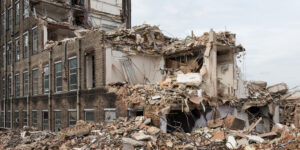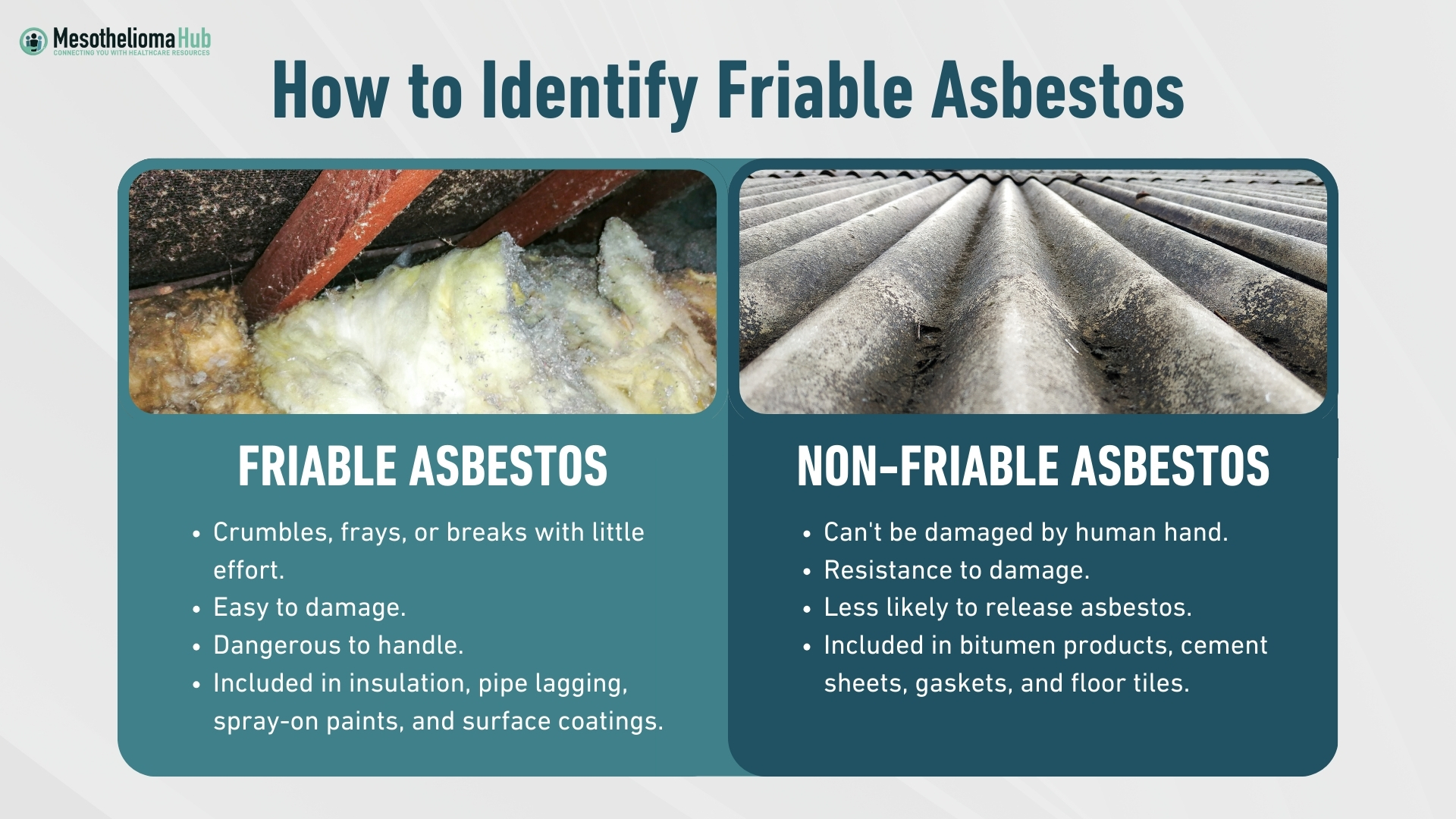Mesothelioma / Asbestos / How to Identify Asbestos / Friable Asbestos
What Is Friable Asbestos?
Friable asbestos includes asbestos-containing materials that are easily crumbled or crushed into a powder. Conversely, the pressure of a human hand won’t cause non-friable materials to break apart. Both materials are potentially hazardous to human health. Abrasive activities can grind or shave asbestos fibers off and send them airborne. If inhaled, the fibers become stuck and increase the risk of some cancers.
Get Free Mesothelioma Guide

What Is Friable and Non-Friable Asbestos Material?
Friable is a term often used in legal documents that refer to the carcinogen asbestos. In general, this consistency of asbestos materials is easily crumbled or turned to powder by touch. Products with high friability (typically high asbestos-containing materials) give way with only light hand pressure. Typically, loose asbestos dust is considered dangerous because of the risk of cancer. However, non-friable does not mean that a material is safe to handle. Over time, these materials may become crumbled or powdery. This usually occurs from normal wear-and-tear on products, accidental or weather damage, or age.
If you’re worried about asbestos exposure, it’s important to understand the difference between friable and non-friable materials. Friable asbestos can easily break apart, releasing harmful fibers into the air that can lead to serious health issues like asbestosis or mesothelioma. Non-friable asbestos is less likely to release fibers but can still pose a danger if damaged. Knowing what materials in your environment contain asbestos can help you take the necessary precautions to protect your health.
What’s the Difference between Friable and Non-Friable Asbestos?
The difference between friable asbestos and non is the state of the fibers. Subsequently, non-friable materials are also called “bonded asbestos” because the fibers are bound together. Understanding these differences between friable and non-friable asbestos is key to assessing your level of risk of exposure. Friable asbestos breaks apart easily, releasing dangerous fibers that can be inhaled and potentially cause lung diseases. Non-friable asbestos is more stable, but it can still become hazardous if it’s damaged or deteriorates over time.
| Friable Vs. Bonded Asbestos | |
| The Difference: | Friable asbestos crumbles, frays, or breaks with little effort while non-friable asbestos can’t be damaged by the human hand. |
| The Same: | Both are cancer-causing, asbestos-containing material (ACM) made with at least 1% of the toxin. |
Usually, the more asbestos a product contains, the weaker it becomes. ACMs with high concentrations of the carcinogen break easily with little pressure (such as popcorn ceiling). However, very few products contain 100% asbestos. Generally, lower concentrations of the fiber translate to lower risks of releasing fibers into the air. For example, non-friable materials often have less than 15% asbestos content (such as asbestos cement).
Classification of Asbestos Containing Materials
Notably, friable ACM is often flaky and crumbles easily – even when it’s new. On the other hand, non-friable ACM is usually uncrushable. Yet, these materials can become dangerous over time through normal age and outside damage. For instance, asbestos-containing automotive brakes cannot crumble by the human hand, but can through abrasive grinding activities. In many states, officials categorize asbestos based on the condition of fibers at the time of manufacturing.
Friable ACMs include:
- Insulation boards
- Pipe lagging
- Spray-on paints and surface coatings
- Thermal insulation
Non-Friable ACMs include:
- Bitumen products
- Cement sheets
- Gaskets
- Roofing felt
- Siding
- Vinyl floor tiles
Friable Asbestos Exposure and Your Health
Exposure to ACM is not normally dangerous. Non-friable ACM, especially, poses a lower risk of releasing fibers too small to see into the air. Yet, even crushable materials aren’t a threat unless damaged. If you suspect items in your home are contaminated, do not move or touch them. You could expose yourself to harmful particles in the air. Asbestos testing, usually done in a lab using Polarized Light Microscopy, is the only way to confirm contamination. Once airborne, the nearly weightless fibers stay afloat for days before nearby people inhale them. Asbestos-caused health problems include diseases like:
- Asbestosis
- Cancers of the oral cavity
- Colon cancer
- Esophagus cancer
- Kidney cancer
- Larynx cancer
- Lung Cancer
- Mesotheliomas
- Stomach cancer
If you suspect that you or a loved one have been exposed to asbestos, it’s essential to take action immediately. Early detection and intervention can significantly reduce the risk of developing serious health conditions like asbestosis or mesothelioma. Contact us today for professional legal guidance. Don’t wait, your health is too important to leave to chance.
If you were exposed to asbestos request a case evaluation below
Evaluate My Case
Mesothelioma Support Team
Mesothelioma Hub is dedicated to helping you find information, support, and advice. Reach out any time!
